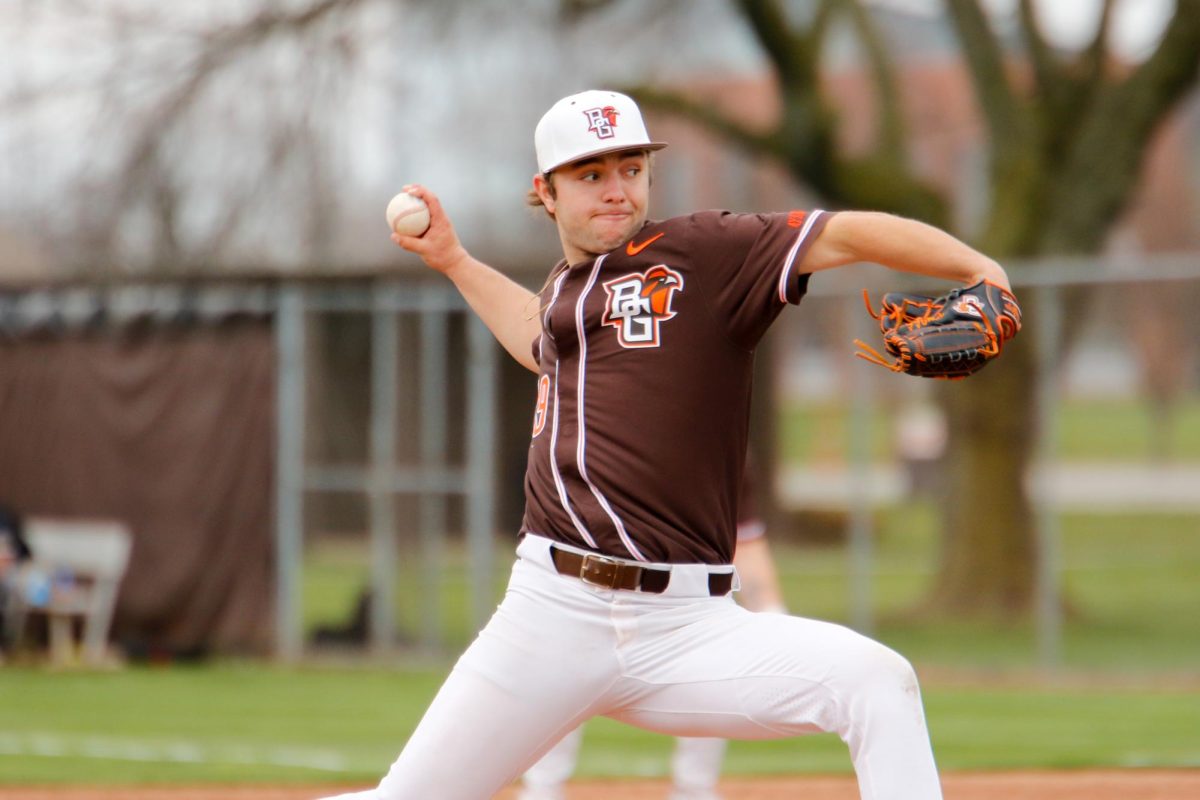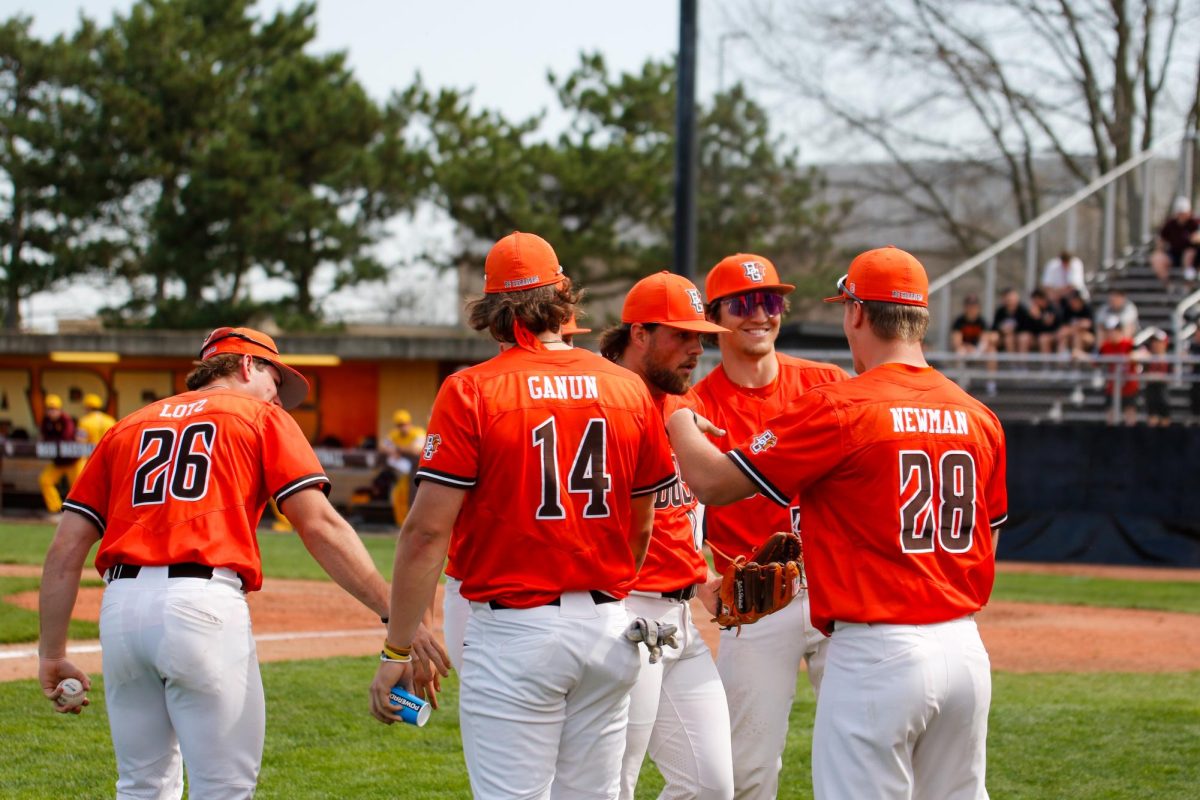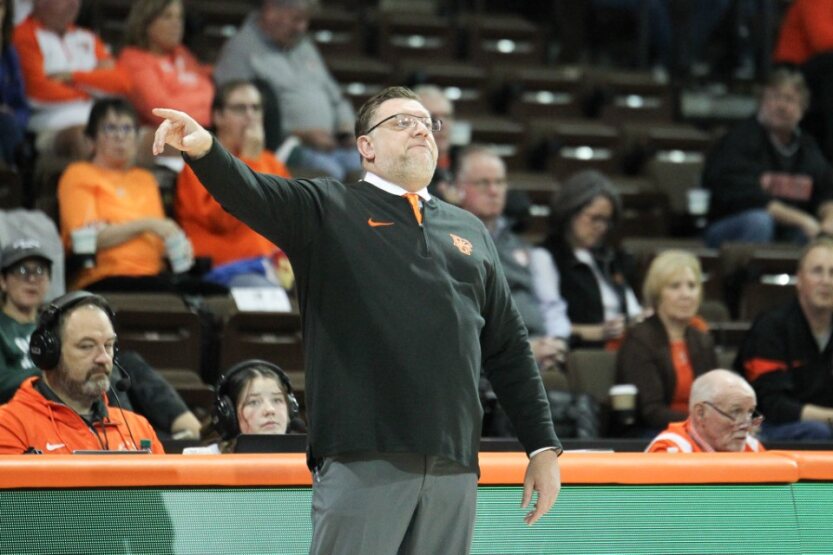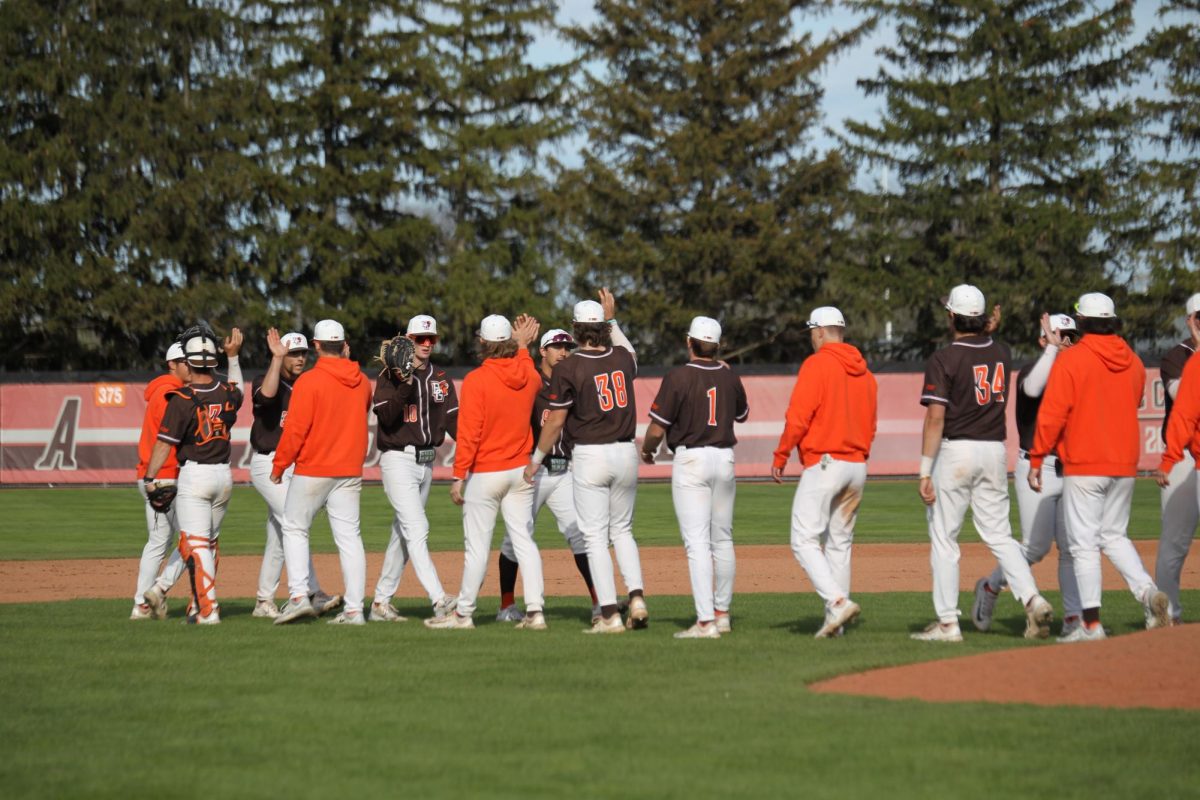On a warm afternoon in Cleveland, people of all ages, races and ethnicities are standing in a room full of dead bodies.
But instead of being scared, they are intrigued. When guests take a closer look at the bodies, they see the life they emit, and the thought of death slowly vanishes.
Here, at Cleveland’s Great Lakes Science Center, a traveling exhibit called “Body Worlds 2: The Anatomical Exhibition of Real Human Bodies” is changing the known facts of death into the mysteries of life.
Through a process called plastination, the body’s water tissue is replaced with fluid plastics that harden, preserving bodies forever – literally.
Plastination was invented in 1977 by Dr. Gunther Von Hagens in Germany, and since Body Worlds 2 first went on tour in 1995, over 15 million people have visited the exhibit worldwide.
The exhibit has taken over 200 organs and body-parts and coupled them with 20 whole-body specimens for a display that beats the diagrams and pictures in any school’s textbook.
Here, guests can compare a smoker’s lungs with a non-smoker’s, see the toll obesity takes on the human body, and view the stages of a fetus’ life.
Physicians and medical students from the Cleveland Clinic and Case Western Reserve University are also on site, volunteering their time to answer any questions and assist those interested in donating their own bodies in the name of science.
On this particular day, the president of the Cleveland Clinic Alumni Association, Dr. Edward Ruszkiewicz, M.D., is on site to answer any questions Body Worlds’ guests have.
Some approach him wondering what they can expect from an upcoming knee surgery, while others ask for advice for a family member with heart disease.
While people pass by, Ruszkiewicz explains why he’s here instead of enjoying the sunny day.
“There’s a group of doctors from the Cleveland Clinic and medical students from Case Western Reserve,” he says. “We have a lot of medical students. We all volunteer on our afternoons off.”
As a medical student years ago, Ruszkiewicz didn’t have the luxury of learning from the plastinates at Cleveland’s Science Center.
He learned about the human body the good, old-fashioned way: from books.
While those books got Ruszkiewicz to where he is today, a bit of subtle envy can be seen in the eyes of a man who never got to study the art of plastination in front of him now.
“When I was a medical student back in the late ’60s, we didn’t have anything like this; you had to learn from the book,” Ruszkiewicz says. “Now, you can see the relationship, the benefit of a lot of the relationships of where the organ is related to another organ. You can see these things much better on specimens like these. And these are real, they’re not models. These are the real thing.”
Through all the different sections of the exhibit – there is a section devoted to the cardiovascular and nervous systems, among others – there is one section that stops visitors in their tracks.
Mothers and daughters stop while men absorb the section devoted to fetal development.
Some people just stare as tears build in their eyes, while others fascinate over the fetuses displaying the delicate stages of life.
Here, guests see embryos from the fourth to eighth week of pregnancy, and fetuses in the third, fifth and seventh month of development. Though these may tug on the emotional strings of their viewers, a plastinate just a few steps away has a crowd of viewers in awe.
A woman – the names, ages and backgrounds of the plastinates are kept anonymous – who donated her body for plastination stands on exhibit. She is average height and is thin.
She is also five months pregnant.
Guests stand and stare at the baby inside of her. Though this is shocking and difficult for some, many other guests view this as the beauty of life.
Trish Rooney, marketing director of the Great Lakes Science Center, recalls an incident a guest had while seeing this exact plastinate.
“We had a really amazing experience,” Rooney says. “We had a group of kids from a high school, and there was a young girl who was pregnant and she was standing there in front of that plastinate and there were just tears running down her face. It was so moving, her recognition of what was happening inside of her body. It was just incredible.”
Though sights like this may be hard for young children to see, Rooney says children are surprisingly accepting and curious of the plastinates.
She also encourages parents to caution their children before they come, discussing what they can expect to see.
But for most children who view the exhibit, the thought of death doesn’t even cross their mind.
“I think [parents] like that the plastinates are posed in a lot of sports poses, so the kids relate to that. If you stand out there for a while, you’ll almost always see a kid go up to the baseball player and try to do that exact same pose,” said Rooney of a plastinate in such a pose. “What I love about that is that it’s so natural. They’re not thinking, ‘Oh, this is a dead person.'”
The end product of a plastinate, which takes up to 1,500 hours of work for just one body, is meant to be something guests can relate to, something that fascinates instead of frightens them.
While the guests leave the exhibit – most a bit more knowledgeable of how the human body works – a book lays open, ready for visitors’ comments.
Visitors share their experience while others chat with guests.
“I thought it was really eye opening, the depth and detail and how the body is fit together, separating the muscles from the blood vessels, from the nerves,” said Paul Hugenberg, a bank executive from Youngstown. “It gives you an idea of how life fits together.”
The Body Worlds 2 exhibit is located in the Great Lakes Science Center in Cleveland. The exhibit is open until Sept. 18, and then travels to Toronto.
For more information, visit www.bodyworlds.com.
This is the first in a series of road trips designed for University students and a single tank of gas. Next month, you can find us at Oktoberfest in Cincinnati.

















